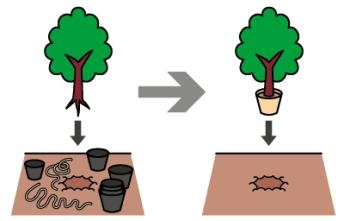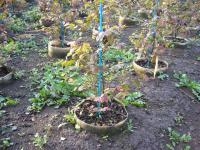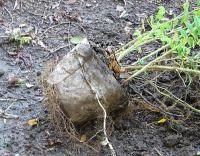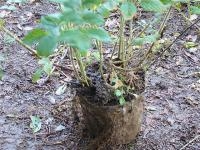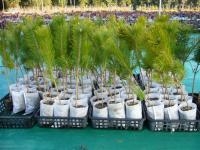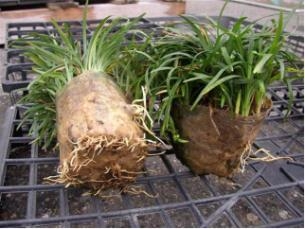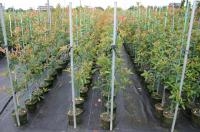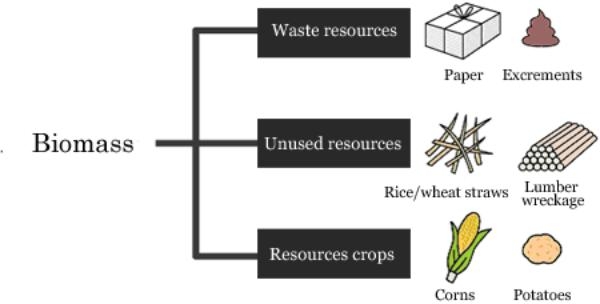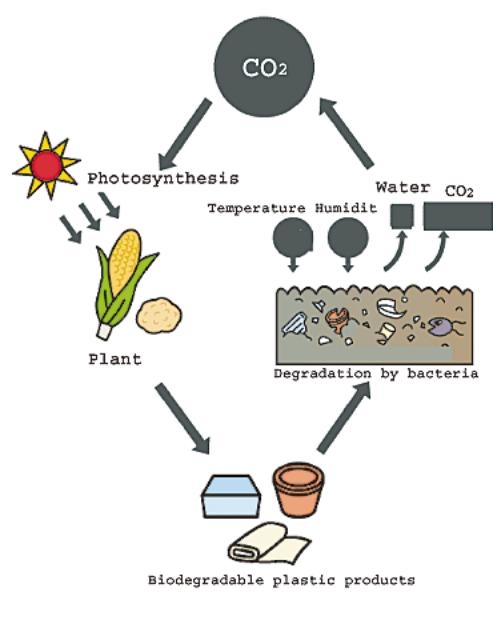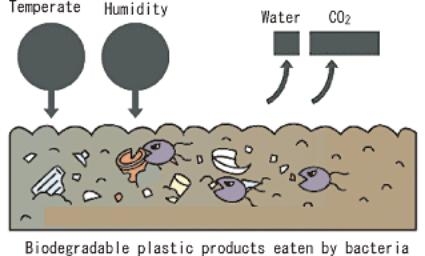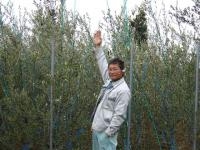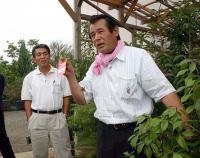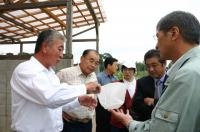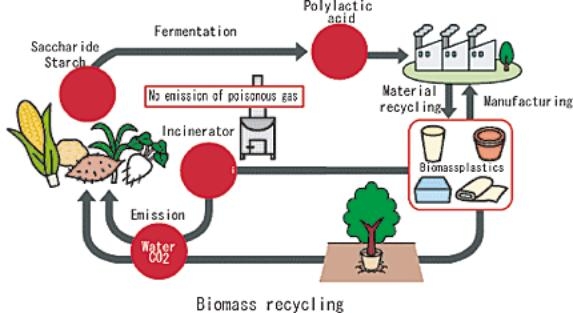Our products decompose and do not accordingly eliminate waste
When we plant plants,petrochemical products, such as empty containers and ropes, become garbage. This garbage has been incinerated or used for reclamation, as waste. The plants grown in our biomass plastic pots (environment-friendly circulation type material) are planted together with the pot in the soil, and therefore do not generate waste, as shown below:
After planting, the container is gradually decomposed into water and carbon dioxide by bacteria in the soil, and returns to earth. The carbon dioxide is then taken in by the plant, which in turn becomes the raw material of this product by photosynthesis.
At cultivation farms plants are usually transplanted in bigger pots according to their growth, which yields garbage. But our products require no transplantation. For this reason, the use of our pots is spreading in the planting of vegetables whose life cycle is short.
Reducing the planting cost
At the times of planting a lot of people work at carrying plants and removing pots, which necessitates a lot of labor and time. After the work, removed ropes and empty containers are left behind. It is time-consuming to dispose of them.
Then what if there is no need to take off pots. You have only to bury them in the ground, although it is necessary to make several cuts in them when their degradation has not progressed. Our pots save a lot of time and labor and do not generate garbage. Thus, personnel expenses are reduced, and at the same time, the disposal of garbage is unnecessary, which leads to the reduction of cost.
Preventing the damage of plants
Plants can weaken or wither when they are transplanted, because taking off their pots can damage their roots. However, our biomass pots need not be removed in transplanting, because they will be decomposed sooner or later in the ground. Thus, our pots are plant-friendly as well as earth-friendly.
The biomass means ‘the total mass or number of living organisms in a particular area or volume’. Generally, the biomass is reproducible living organisms, not chemical petroleum resources. There are many kinds of biomass. They are roughly classified into ‘waste resources’, ‘unused resources’, and ‘resources crops’ (plants cultivated to manufacture energy and biomass products’).
The waste resources include paper discarded at homes or offices, livestock’s excrements, food waste, wood remains at construction sites, wood waste at lumber mills, black liquor (pulp factory waste), sewer sludge, human waste, etc.
The unused resources include rice and wheat straws, chaff, lumber wreckage in the forests (thinned trees and damaged or withered trees), etc.
The resources crops include carbohydrate crops, such as sugarcane and corn, and oil crops such as rape and sesame.
Biomass products bear the biomass mark
The Japan Organic Resources Association (JORA
http://www.jora.jp/) authorizes products suitable for the biomass mark. The biomass mark, as shown below, is a registered trademark of The Japan Organic Resources Association Corp.
Carbon-neutral (zero emission) preventing global warming
The biomass is attracting attention as new resources contributing to the prevention of global warming and the construction of a recycling-oriented society. The biomass contains various organic substances and, like fossil fuels, generates carbon dioxide by combustion. However, plants emit only the carbon dioxide they have taken in in the atmosphere by photosynthesis as they grow. Therefore it is assumed that plants do not increase the carbon dioxide in the atmosphere in terms of life cycle. The circumstance in which the increase and decrease of carbon dioxide is not affected is called carbon-neutral.
Biomass plastics are made from the starch of corn and others and are therefore called plastics of plant origin. Compared with the use of plastics of the fossil resources origin, that of biomass plastics of plant origin is still less than 0.1%.Biomass products which are earth-friendly and prevent global warming have not spread well because of their price or strength. The raw material of our biomass products is a polylactic acid (PLA) unwoven fabric.
Characteristics of polylactic acid
Our pots degrade by hydrolysis, but they do not completely decompose. By the action of bacteria, however, they decompose gradually in the ground and promptly in compost.
Biological decomposition requires a certain temperature, humidity, and the micro-organism. Only under these conditions they decompose. This unwoven fabric not only excels in ventilation and water conducting, but is mold-proof and free from germs.
Development and spread of commodities using biodegradable unwoven cloth
The commodities are put to practical use in Japan, where there are a number of actual users, as shown below;
Towards a recycling-oriented society
So far a lot of plastics of fossil resources origin have been used, but it is high time to switch to biomass plastics which do not pollute environment.
As a result, it leads to the realization of environmental recycling society.
The spread of biomass plastics is to be desired in future.

